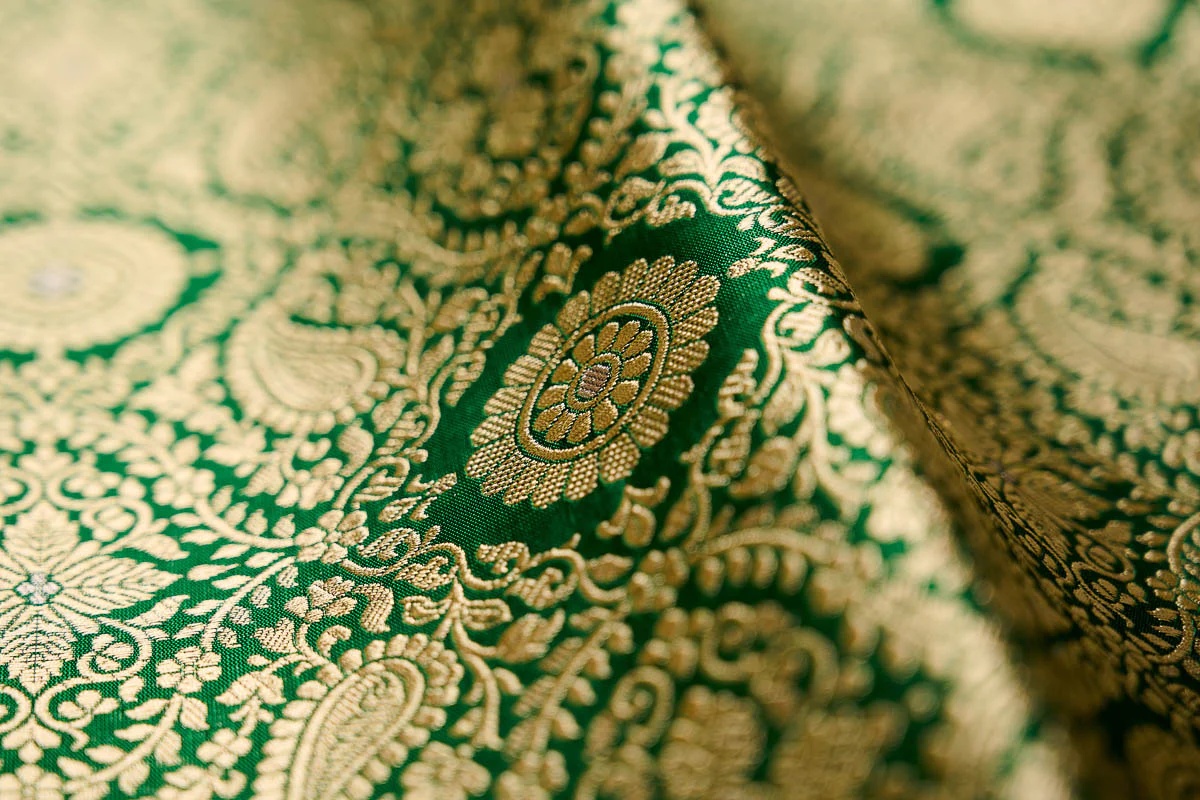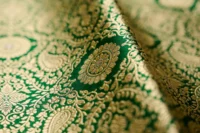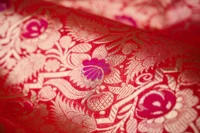History of the Textiles Fabric is part of the story of Prince Siddharth who later came to be known as Gautam Buddha or Lord Buddha. He is said to have removed his royal silk robes, most probably among the best woven in Varanasi, and took to wearing the ‘kasayani vastrani’; Kasi or Kashi being another name for Banaras, where fine, smooth, silk yarn was produced apart from the best of cotton.

What is Banarasi Silk Fabric?
- Banarasi silk fabric is a fine quality silk variant originating from Varanasi, Uttar Pradesh.
- Banarasi silk has its roots deep in the rich history of India.
- Saree woven from silk is known as Banarasi silk Saree, which is an extremely famous fabric all over India and the world.
- Originally designed for royalty, Banarasi fabric was designed with pure gold and silver threads, taking more than a year to make.
History
- Banarasi silk is a great example of magnificent artistry.
- Such art was brought to India by Mughals, as they tried their best to glorify the art of crafting and weaving.
- Before that Banarasi sarees were imported from China.
- Throughout this, they inspired several artisans to operate in intricate art.
- Also at that time, Persian motifs were mixed with the Indian attires.










Lorem Ipsum is simply dummy text of the printing and typesetting industry. Lorem Ipsum has been the industry’s standard dummy text ever since the 1500s, when an unknown printer took a galley of type and scrambled it to make a type specimen book. It has survived not only five centuries.
Lorem Ipsum is simply dummy text of the printing and typesetting industry. Lorem Ipsum has been the industry’s standard dummy text ever since the 1500s, when an unknown printer took a galley of type and scrambled it to make a type specimen book. It has survived not only five centuries.
Lorem Ipsum is simply dummy text of the printing and typesetting industry. Lorem Ipsum has been the industry’s standard dummy text ever since the 1500s, when an unknown printer took a galley of type and scrambled it to make a type specimen book. It has survived not only five centuries.